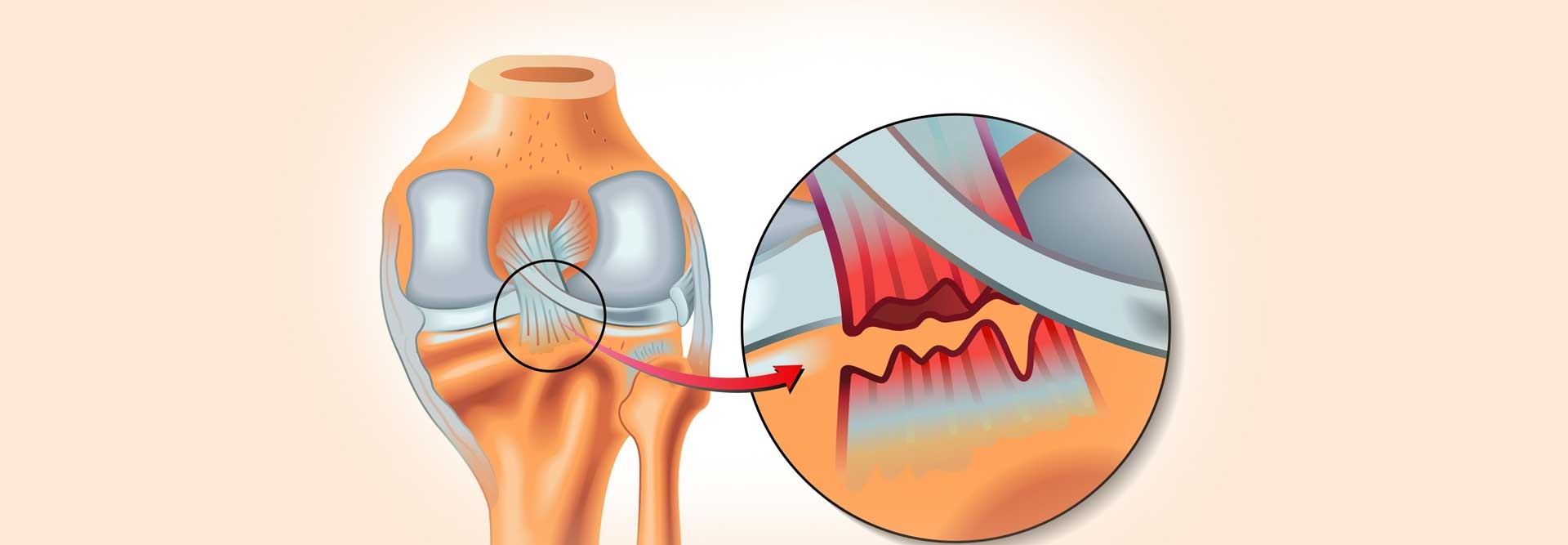What is posterior cruciate ligament (PCL) injury
The posterior cruciate ligament (PCL) and the anterior cruciate ligament (ACL) are ligaments that crosses within the knee connecting the shinbone (tibia) to the thigh bone (femur) and helps to stabilize your knee joint. The posterior cruciate ligament (PCL) may become injured or torn during sporting activities involving sudden stops, jumps, turns or quick changes in direction or jogging or running on rough or uneven ground.
The knee joint is comprised of a complex structure of bones, ligaments, tendons and tissue. The ligaments are attached to the bone, and when an injury occurs to the knee, a piece of the bone can be torn or break loose causing intense pain in the area.
Most knee injuries are the result of damage to the anterior cruciate ligament (ACL), rather than the posterior cruciate ligament (PCL) however, posterior cruciate ligament damage can have an adverse effect on other areas in the knee including cartilage tissue.
The knee joint is comprised of a complex structure of bones, ligaments, tendons and tissue. The ligaments are attached to the bone, and when an injury occurs to the knee, a piece of the bone can be torn or break loose causing intense pain in the area.
Most knee injuries are the result of damage to the anterior cruciate ligament (ACL), rather than the posterior cruciate ligament (PCL) however, posterior cruciate ligament damage can have an adverse effect on other areas in the knee including cartilage tissue.
Symptoms
Symptoms or indications of a posterior cruciate ligament (PCL) injury can include:
- Acute or chronic pain in the knee joint
- Rapid swelling around the knee joint
- Inability to exert pressure on the knee or continue activity
- Stiffness in the shoulder
- A feeling of the knee being unstable, volatile or unsteady when standing or walking
- An incorrect or improper landing on your legs and feet from a jump
- A collision or impact to the front or side of the knee
- Falling on the knee while the knee is bent
- Auto collision or impact to the front or side of the knee
- A pivoting motion of your leg when your foot is stuck to the ground
- Impact to the knee during sports such as; rugby, soccer, football, skiing, baseball or any intense exercise or sporting activity
- Sudden, fast changing of direction of your legs and feet
- A sudden and abrupt stop, putting excess pressure on the knee joint
Professional advice
It is important to seek immediate medical care and get a prompt and accurate diagnosis for any physical injury, pain, sprain, strain, cramp, rupture, tear or damage to determine the severity of the injury and receive proper treatment.
If you are involved in sporting activities or training exercises, it is advisable to seek advice from a professional sports medicine specialist or physical therapist so you can develop proper training exercises that can help reduce the risk of further injury or damage. Proper guidance and advice can provide you with the necessary instructions on preventing and reducing the risk of injuries.
Injuries such as this, particularly repeat injuries run the risk of you possibly developing osteoarthritis or arthritis in the knee if not tended to sooner rather than later.
- Always start with slow and gentle ‘warm-up exercises’ prior to any physical work or sporting activity
- Applying an ice-pack or heated wheat-pack to the painful area for 10-15 minutes 2-3 times daily may help to reduce levels of inflammation pain and swelling
- Swimming or water aerobics can be a very helpful activity for your overall body
- Exercising in the pool may be beneficial if you cannot swim, as the buoyancy of the water reduces the weight on your joints. This can be beneficial for overall exercise or following any injury of any kind to the physical body
- You may find that a reduction in any strenuous activity may help to improve any pain or discomfort
- Maintain a healthy weight level. If you are carrying excess weight this in itself can put added stress on your joints
- Choose appropriate footwear for normal activities or when involved in a particular sport or exercise programme
- Maintain good physical health, strength and flexibility
- As in many cases of injury you may be advised to rest for a number of days or weeks to reduce the risk of further damage, inflammation or injury
- Following a restful period, you may be able to return to exercise, but avoid any activity likely to aggravate the pain or injury
- Protect your knee from any further injuries
- Rest your leg and knee in an elevated position
- If you are kneeling, use a kneeling pad or cushion underneath you knees
- Engage in light exercises that can help strengthen leg muscles
- Engage in light exercises to help improve turning, jumping, landing or pivoting movements
- Engage in light exercises to help develop overall balance
Self-help, self-care & self-healing options
Having received a professional diagnosis and medical attention, you have the choice of applying self-help, self-care / self-healing techniques which may help to accelerate and hasten the healing process for many health concerns and may also help as a preventative measure against future or further pain, injuries, sprains, strains, cramps or physical discomfort.
Learn self-healing methods which you can apply to yourself on our advanced self-healing course to help improve physical, emotional and mental health and well-being. Register today to start your journey into self-healing your body, mind and spirit.
Learn self-healing methods which you can apply to yourself on our advanced self-healing course to help improve physical, emotional and mental health and well-being. Register today to start your journey into self-healing your body, mind and spirit.

Register today and start your self-healing journey straight away!


